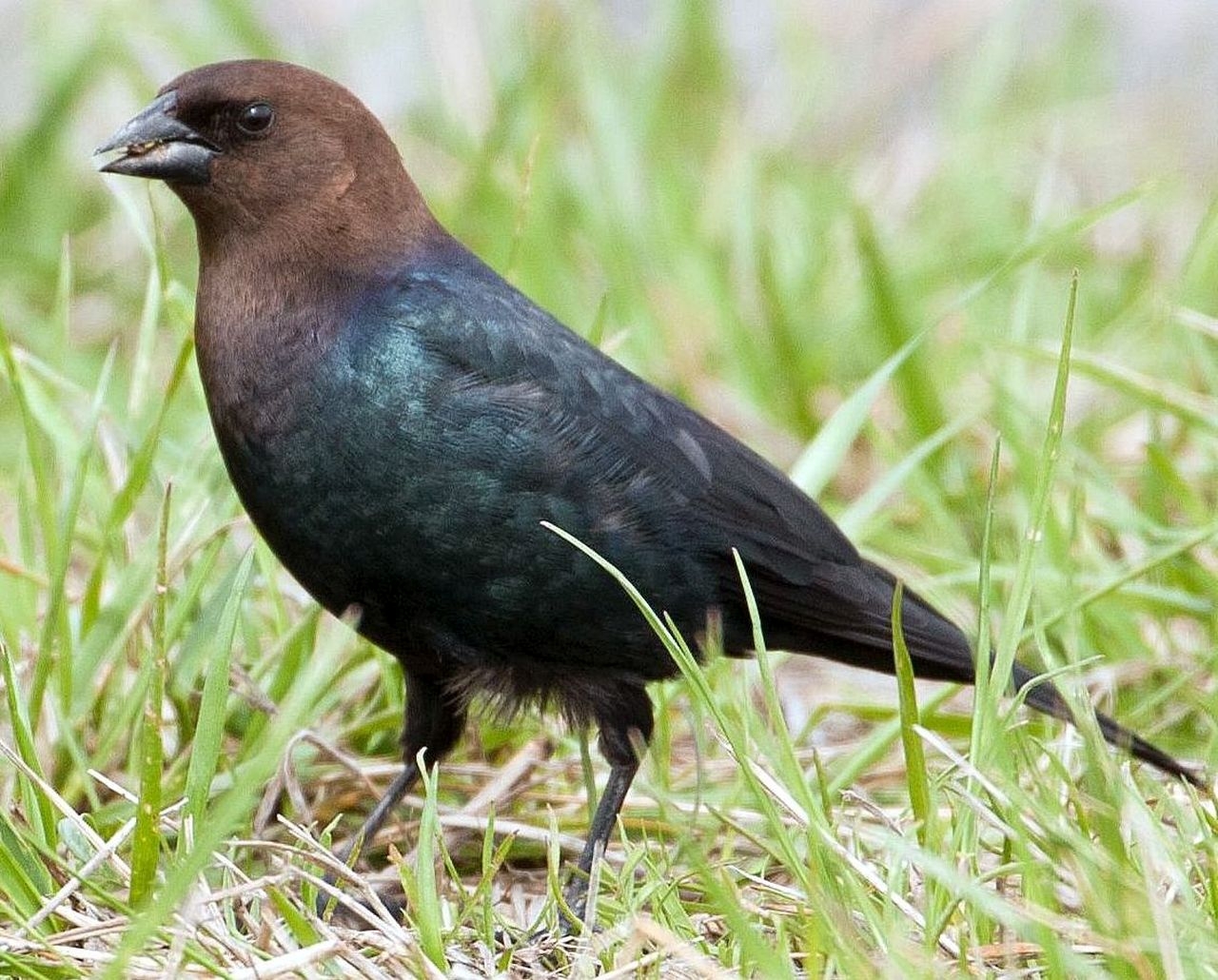
Brown-headed Cowbirds are easily overlooked among the flocks of returning blackbirds in early spring. They are a similar shape and size to Red-winged Blackbirds, and the males of both species are mostly black. Male Brown-headed Cowbirds have no red or yellow on the wing, and a brown head. Females look completely different; they are a sandy tan all over with a whitish throat patch, like a slightly larger, less-striped female House Sparrow. Seeing these two distinct plumages together in the same group is a good clue that you are seeing Brown-headed Cowbirds, since most other blackbird species are less dimorphic. Clear contrast is another common way many people see cowbirds in their backyard: begging for food from a parent of a different species, often a much smaller sparrow or warbler.
Brown-headed Cowbirds are well-known brood parasites, with females laying eggs in other birds’ nests and leaving them to be cared for by the host species. They evolved this tactic in their ancestral habitat, following bison herds around the Great Plains, which gives them their other common name, “Buffalo Birds”. Since the herds were constantly on the move, cowbirds never had time to build nests, but they could deposit eggs in existing nests while they were stopped near a thicket. They spread east as European colonists destroyed forests and replaced them with fields and livestock, unwittingly replicating aspects of Brown-headed Cowbirds’ original habitats. Now they can be found in open habitats throughout Maine, where they feed on seeds and insects, often near thickets and hedges that offer cover and potential nests to parasitize. If there are cows or horses near your backyard, you may even see a flock of Brown-headed Cowbirds perched on their backs, like they would have on the bison herds of the Great Plains.
Backyard Bird of the Month is a feature by Maine Audubon created for the Maine Home Garden News, the newsletter of the University of Maine Cooperative Extension: Garden and Yard
Photo credit: Mike Carlo/USFWS
